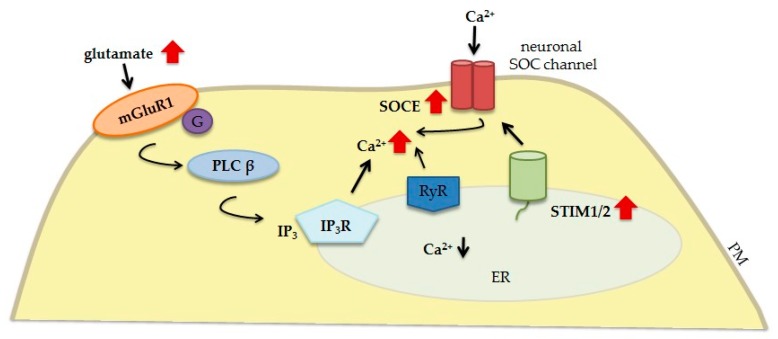Figure 3.
Contribution of neuronal STIM proteins and glutamate receptors to Ca2+ signaling dysregulation in TBI. The elevation of glutamate release leads to the excessive stimulation of glutamate receptors (e.g., mGluR1). mGluR1 couples to Gα-protein, which activates PLCβ and induces the formation of IP3 that interacts with IP3Rs, causing the release of Ca2+ from ER stores. mGluR1 also contributes to RyR-mediated Ca2+ leakage, resulting in lower ER Ca2+ levels, which in turn activate STIM proteins and promote SOCE that contributes to Ca2+ overload. Solid black arrows represent the interaction mechanisms; red solid arrows symbolize increased expression/concentration.

